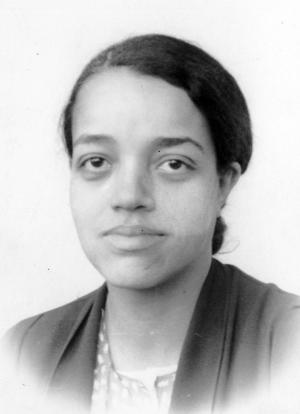Year born: 1910
Research Areas: Computer Programming
"I changed what I could, and what I couldn't, I endured."
After her retirement, this was what she had to say when asked about working within the constraints of segregation and gender.
Source: NASA

Early Life
Dorothy was born in Missouri, USA. She graduated top of her class from high school in West Virginia and got a scholarship to attend Wilberforce University in Ohio. In 1929, Dorothy graduated with a degree in mathematics. Following university, Dorothy taught maths in a high school for fourteen years. She started working as a mathematician at the Langley Research Centre in 1943. Her job involved doing the maths needed to work out flight paths for planes and rockets. Dorothy did the calculations by hand. These days it is done using computers. Dorothy, and other women like her, were often referred to as "human computers".
Dorothy was the head of the National Advisory Committee for Aeronautics’ (NACA’s) segregated West Area Computing Unit from 1949 until 1958. She was the NACA's first Black supervisor, and one of the NACA's few female supervisors. Dorothy worked with other members of her team on projects including writing a maths handbook for using mechanical calculating machines. Engineers valued Dorothy and they often requested her personally to work on particularly challenging assignments.
In 1958, the NACA became part of NASA and they got rid of racially segregated facilities, including the West Computing office. Dorothy and many of the former West Computers joined the new Analysis and Computation Division (ACD). In the ACD, men and women of different races worked together at the cutting edge of electronic computing. Dorothy taught herself and her staff a computer programming language so that they could continue to work on the new electronic computers. She also worked on the Scout rockets used to put satellites into orbit around Earth. Dorothy worked as a mathematician and programmer at Langley for a total of 28 years.
Legacy
Dorothy’s work was featured in the book and film ‘Hidden Figures’. In 2019, Dorothy was awarded the Congressional Gold Medal. In the same year, a crater on the Moon was named Vaughan crater in her memory.
Other Interests
Dorothy was an active member of her church and took part in music and missionary activities. She also wrote songs about maths.
